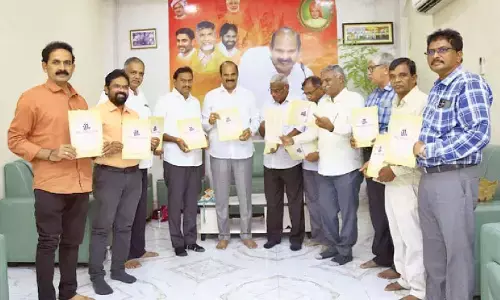IISER Bhopal uses statistical methods to improve rainfall forecasts in Indian river basins

The Indian Institute of Science Education and Research Bhopal (IISER Bhopal) researchers on Tuesday said that it has collaborated with Australian universities and research organisations to develop statistical techniques to enhance the accuracy of rainfall predictions in Indian river basins.
New Delhi: The Indian Institute of Science Education and Research Bhopal (IISER Bhopal) researchers on Tuesday said that it has collaborated with Australian universities and research organisations to develop statistical techniques to enhance the accuracy of rainfall predictions in Indian river basins.
The team said that it aims to mitigate the challenges posed by the erratic nature of rainfall, a crucial factor for India's agricultural productivity and overall sustenance.
The findings of the research team have been published in journals -- the Hydrological Sciences, the International Journal of River Basin Management and the Journal of Hydrology: Regional Studies.
"This collaborative research initiative between IISER Bhopal scientists and their Australian counterparts carries immense potential to revolutionise India's ability to anticipate and address rainfall-related complexities," said Sanjeev Kumar Jha, Assistant Professor, Department of Earth and Environmental Sciences, IISER Bhopal.
The research team employs diverse statistical approaches to predict rainfall patterns.
In an earlier study published in 2021, the team used Quantitative Precipitation Forecast (QPF) data obtained from a numerical weather prediction model to forecast the flow of water in rivers.
By analysing a range of observational datasets, including satellite and rain gauge data, the researchers evaluated forecast accuracy across major river basins like Ganga, Narmada, Mahanadi, Tapti, and Godavari.
This year, the team implemented a statistical model called the Seasonally Coherent Calibration (SCC) model to enhance rainfall forecasts in the Narmada and Godavari River basins.
The SCC model significantly improved the skill of forecasts over a five-day lead time. The calibrated precipitation forecasts were further applied to generate streamflow predictions using a Soil and Water Assessment Tool.
In yet another branch of research, the researchers focused on the Ganga, Mahanadi, Godavari, Narmada, and Tapti River basins, aiming to refine Indian summer-monsoon precipitation forecasts from the NCMRWF.
They used a statistical approach called the Bayesian Joint Probability (BJP), originally used in Australia, to evaluate the approach's effectiveness in the context of India's monsoon-dominated climate.
The study indicated that the BJP-based post-processing approach could substantially enhance forecast skills, particularly when considering only monsoonal precipitation forecasts.
















